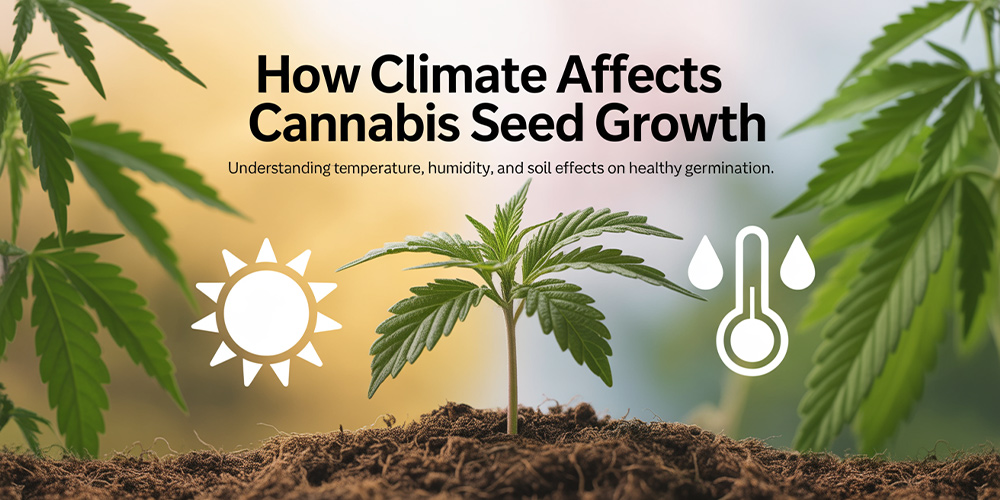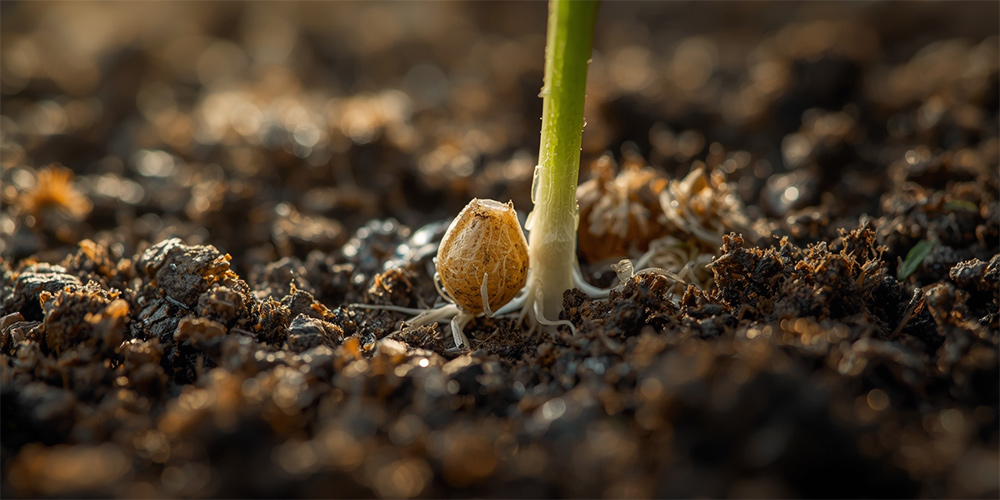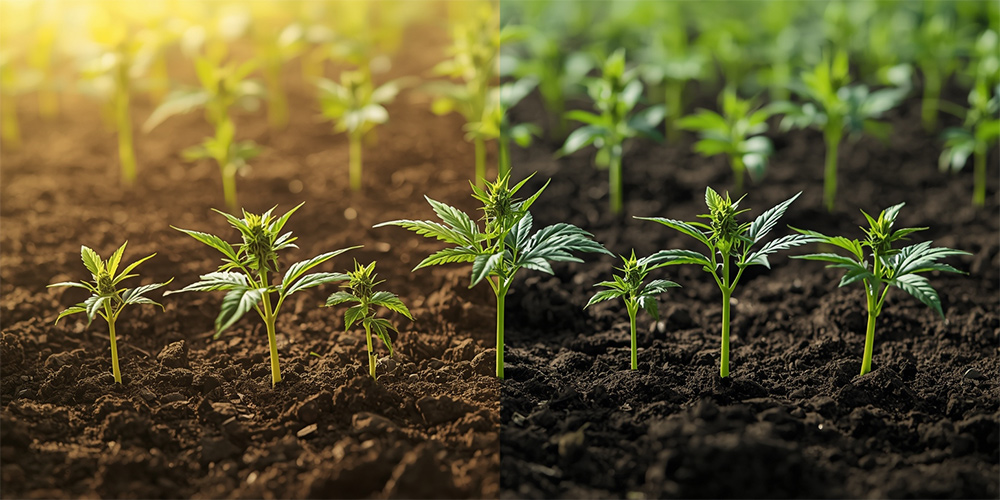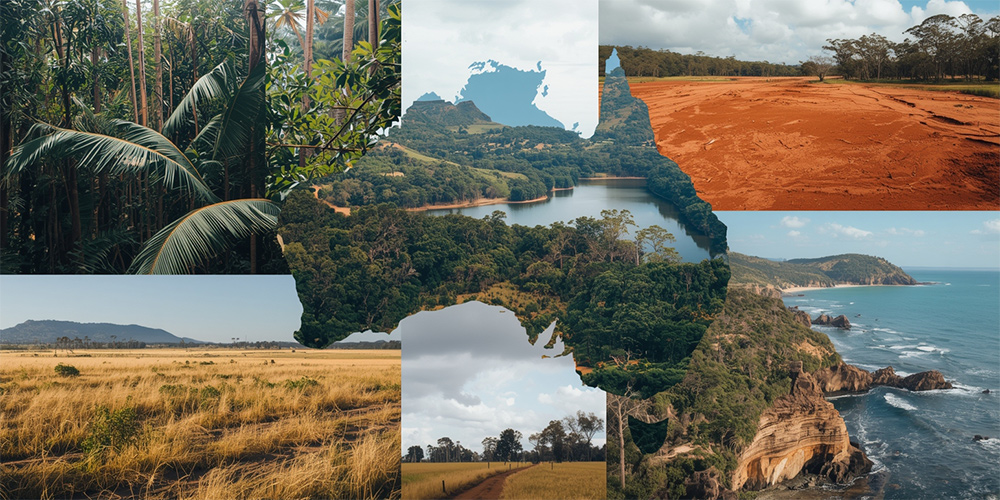
Home » How Climate Affects Cannabis Seed Growth
How Climate Affects Cannabis Seed Growth
Climate plays a defining role in the life of every cannabis plant — beginning from the moment a seed awakens. The right balance of temperature, humidity, and moisture triggers the biochemical processes that lead to germination, while unfavorable conditions can halt growth before it begins.
For growers in Australia, where conditions vary dramatically from the tropical north to the arid interior and cool southern regions, understanding how climate affects cannabis seed growth is crucial. This article explores the science behind seed germination, the specific climatic variables that influence success, and practical strategies to adapt to Australia’s diverse environments.
Understanding Cannabis Seed Germination
The Biology of Germination
Cannabis seeds begin life in dormancy, waiting for environmental cues — warmth, moisture, and oxygen — to activate internal enzymes. This process, called imbibition, allows the seed to absorb water, softening its shell and triggering the emergence of the radicle, or first root.
According to a 2024 study in the Journal of Seed Biology by researchers at the University of Mississippi, germination rates in Cannabis sativa are highly sensitive to surrounding temperature and humidity levels. Small changes of even 3–5 °C can influence enzymatic activity, speed, and success rates.

Why Climate Matters at the Seed Stage
The seed stage determines whether a plant will ever reach maturity. Temperature fluctuations, soil moisture stress, or poor air exchange can reduce germination by up to 40%. Climate doesn’t just affect emergence — it shapes the vigor, disease resistance, and productivity of the mature plant.
Major Climate Factors That Affect Cannabis Seed Growth
Each environmental element influences germination differently, and understanding their interplay is key to strong, healthy seedlings.
Temperature
Temperature is the most critical driver of seed metabolism.
- Optimal range: 20–28 °C, with peak germination rates near 25 °C.
- Below 10 °C: Enzyme activity slows; seeds may remain dormant or rot.
- Above 35 °C: Heat stress causes protein denaturation and reduced viability.
A 2024 MDPI study on hemp seed germination confirmed that most cultivars have cardinal temperatures around 10 °C (minimum), 25 °C (optimum), and 35 °C (maximum).
Grower Tip: Use seedling heat mats or place trays in a temperature-stable environment to maintain consistent warmth during germination.
Humidity & Air Moisture
High humidity supports initial water uptake but also increases fungal risks.
- Ideal humidity: 80–90% during germination, tapering to 60–70% as seedlings emerge.
- Excess humidity (>90%) encourages mold and damping-off diseases.
- Low humidity (<50%) can desiccate emerging radicles before establishment.
Grower Tip: Cover seeds with a humidity dome or plastic film but ventilate daily to prevent condensation buildup.
Soil Moisture & Rainfall
Moisture activates seed enzymes, but both overwatering and drought can be fatal.
- Too wet: Limits oxygen flow, causing rot.
- Too dry: Interrupts imbibition, halting germination.
A 2023 study by the University of Queensland found that consistent soil moisture between 60–80% of field capacity yielded the highest germination rates for hemp and cannabis species under Australian conditions.
Grower Tip: Use well-draining seedling mix, water lightly, and maintain even moisture rather than soaking.

Light & Photoperiod
Cannabis seeds don’t require light to germinate, but light indirectly affects soil temperature and humidity stability. Once seedlings emerge, proper light intensity becomes essential for photosynthesis and stem strength.
Grower Tip: Germinate seeds in darkness, but move seedlings under gentle full-spectrum light immediately after sprouting.
Airflow & Microclimate
Air circulation prevents mold and regulates humidity. Subtle airflow strengthens stems and lowers disease incidence. Microclimates — such as under shade cloths or near walls — can protect against harsh Australian sun and wind exposure.
Grower Tip: Maintain airflow without direct drafts; gentle fans or natural breezes are ideal.
Climate Zones and Cannabis Seed Growth in Australia
Australia’s climate diversity demands localized strategies for germination success.
| Climate Zone | Regions | Seed Growth Challenges | Best Sowing Time |
| Tropical | QLD, NT (north) | Excess humidity, heavy rains | Late dry season (April–June) |
| Arid / Semi-Arid | WA interior, SA, NT | Extreme heat, rapid soil drying | Late spring (October–November) |
| Temperate | VIC, southern NSW | Cool mornings, moderate rainfall | Mid-spring (September–October) |
| Coastal | Eastern and southern coasts | Wind, variable humidity | Early spring or autumn |
| Highland / Alpine | TAS, ACT highlands | Cold nights, frost risk | Late spring (November) |
Before starting seeds, it’s essential to align germination with seasonal temperature stability. For a complete guide on choosing the right planting window for your region, see Cannabis 101: When to Plant Cannabis.
Key Takeaway:
Choose sowing time when day temperatures average 20–28 °C and nights stay above 15 °C. Avoid periods of heavy rain or extended heatwaves.
How Climate Extremes Impact Seed Germination
Heat Waves
Prolonged exposure above 35 °C can desiccate seeds, reduce viability, and damage embryonic tissues. Growers should start seeds indoors during extreme heat and transplant after stable conditions return.
Cold Snaps & Frost
Cold halts germination, leading to uneven emergence. A 2022 experiment at the University of Melbourne showed that short-term exposure to 5 °C reduced germination rates by 30%.
Prevention: Use indoor propagation or soil heating cables.
Drought & Irregular Rainfall
Dry conditions interrupt enzyme activity and reduce soil microbial balance essential for seed health. Applying mulch and watering early morning can reduce evaporation.
High Humidity / Flooding
Soil oversaturation cuts off oxygen, promoting fungal pathogens. Adding perlite or coarse sand to germination mixes can improve aeration.

Climate Change and Cannabis Seed Resilience
Australian growers increasingly face unpredictable weather patterns. Rising temperatures and erratic rainfall mean seed germination windows are narrowing.
Research from the CSIRO (2020) warns that Australia’s average growing season temperatures have increased by 1.4 °C since 1910, increasing the risk of heat stress in early crops.
A 2022 University of Queensland study found that heat-tolerant hemp genotypes maintained 90% germination at 32 °C, suggesting selective breeding could enhance resilience.
As breeders develop cultivars suited for varying environments, understanding which strains thrive under different global conditions can help guide selection. See Cannabis Seeds for Different Climates: Mediterranean, Continental, Tropical for a detailed breakdown.
Key Takeaway: Choosing regionally adapted genetics will become crucial for maintaining consistency under changing climates.
Practical Adaptation Strategies for Growers
- Controlled Environments
Start seeds indoors using humidity domes and seedling trays. Transition outdoors only when night temperatures stabilize. - Timing Adjustments
In temperate zones, late spring is ideal; in tropical zones, use the drier season to reduce humidity-related risks. - Soil Conditioning
Mix compost, coco coir, and perlite to retain moisture without waterlogging. - Moisture Management
Use capillary mats or drip irrigation systems for even hydration. - Monitoring Tools
Track climate variables with thermometers, hygrometers, and soil moisture sensors to make timely adjustments.
Conclusion
Climate determines whether a cannabis seed thrives or fails. The right temperature, humidity, and soil moisture balance are critical during germination. In Australia’s variable environments, growers must adapt by timing sowing carefully, using protective methods, and selecting resilient genetics.
By applying climate-aware techniques, even the smallest seed can grow into a healthy, productive plant — proof that success begins with understanding the environment itself.
Frequently Asked Questions
1. What temperature is best for cannabis seed germination?
Between 20–28 °C, ideally around 25 °C for most cultivars.
2. Can seeds germinate outdoors during winter?
Not effectively; soil temperatures below 10 °C slow or stop germination.
3. How does humidity affect germination?
High humidity aids water absorption but can cause fungal growth; maintain 80–90% early, then lower to 60–70%.


One Response